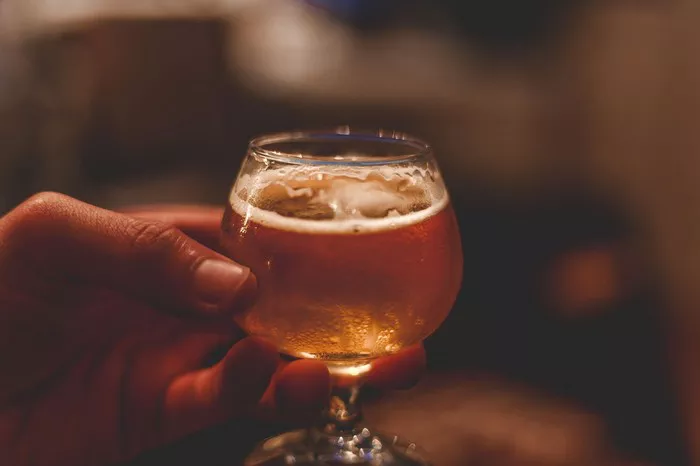In the world of beverages, few concoctions hold as much allure and variety as wine and cocktails. Both are beloved for their unique flavors, aromas, and cultural significance. While they share a place in social gatherings and gastronomic experiences, they differ fundamentally in their composition, production, and serving styles. To comprehend the nuances that set wine and cocktails apart, one must delve into their distinct characteristics, histories, and the intricate artistry involved in their creation.
Origins and Historical Significance
The dissimilarities between wine and cocktails begin with their origins and historical significance. Wine, one of humanity’s oldest alcoholic beverages, dates back thousands of years to ancient civilizations such as Mesopotamia, Egypt, and China. Its creation involves the fermentation of grapes, where yeast consumes the natural sugars, resulting in alcohol. Over centuries, wine has evolved into an emblem of sophistication and culture, with different regions worldwide boasting unique varieties and production methods.
In contrast, cocktails have a comparatively more recent inception. The term “cocktail” emerged in the early 19th century in the United States, initially defined as a concoction comprising spirits, sugar, water, and bitters. Cocktails gained prominence during the Prohibition era when the ban on alcohol led to the creation of elaborate mixed drinks to mask the flavors of bootlegged spirits. Unlike wine, cocktails encompass a vast array of mixed drinks, allowing for endless creativity and innovation by mixologists.
Ingredients and Composition
The fundamental disparity between wine and cocktails lies in their ingredients and composition. Wine predominantly consists of fermented grapes, although other fruits like berries and apples can be used for fruit wines. The fermentation process involves yeast breaking down the sugars present in the fruit, converting them into alcohol and carbon dioxide. Various factors such as grape variety, soil, climate, and winemaking techniques contribute to the diverse range of wines available, each with its distinct characteristics of aroma, flavor, and body.
Conversely, cocktails encompass a medley of ingredients beyond alcoholic spirits. They often incorporate a combination of spirits, mixers, syrups, bitters, and fresh fruits or herbs, allowing for an extensive spectrum of flavors and textures. Bartenders skillfully blend these diverse components to craft a balanced and harmonious drink, with the choice of ingredients and their proportions playing a pivotal role in the final taste and presentation of the cocktail.
Production Methods
The production methods employed in creating wine and cocktails are vastly different, contributing to their unique characteristics. Winemaking involves a meticulous process that starts with harvesting ripe grapes. The grapes are crushed to extract the juice, which undergoes fermentation, followed by aging and, in some cases, blending before bottling. The nuances of winemaking, including fermentation vessels, aging techniques (such as oak barrel aging), and the duration of aging, greatly influence the wine’s flavor profile and complexity.
On the other hand, crafting cocktails is an art form that demands precision and creativity. Mixologists combine specific quantities of various ingredients, often employing techniques such as shaking, stirring, muddling, or layering to create visually appealing and flavorful beverages. Unlike wine, where the flavors evolve over time, cocktails are made to be consumed immediately to savor the freshness and balance of flavors created by the mixologist.
Alcohol Content and Serving Styles
Another notable difference between wine and cocktails lies in their alcohol content and serving styles. Wine typically ranges in alcohol content from around 9% to 16%, with fortified wines like Port or Sherry reaching higher alcohol percentages. Its serving style involves pouring the wine into specific glassware designed to accentuate its aromas and flavors. Moreover, wines are often savored slowly, allowing drinkers to appreciate their complexities as they evolve in the glass.
In contrast, cocktails can vary significantly in their alcohol content, depending on the spirits and mixers used. Some cocktails, like the classic Martini or Negroni, contain higher alcohol concentrations, while others, such as fruity spritzers or mocktails, may have lower alcohol content or be entirely alcohol-free. The serving styles for cocktails are diverse, ranging from being served in stemmed glassware to ornate tiki mugs or even quirky vessels, each adding to the overall drinking experience.
Cultural Significance and Social Context
Both wine and cocktails hold profound cultural significance and play distinct roles in various social contexts. Wine has been intertwined with cultural traditions, religious ceremonies, and social gatherings for centuries. It is often associated with sophistication, refinement, and formal dining, with certain wines becoming emblematic of specific regions or countries, such as Champagne from France or Chianti from Italy.
Conversely, cocktails have a more dynamic and adaptable presence in social settings. They are synonymous with conviviality, celebration, and creativity. Cocktails are often enjoyed in diverse settings, ranging from upscale lounges and speakeasies to casual bars or backyard parties. The versatility of cocktails allows for customization to suit individual tastes and preferences, making them a popular choice for socializing and experimentation.
Conclusion
In essence, the distinction between wine and cocktails extends far beyond their liquid content. While wine embodies centuries of tradition, craftsmanship, and terroir-driven nuances, cocktails represent a realm of innovation, creativity, and mixological expertise. Understanding the differences in their origins, ingredients, production methods, alcohol content, and cultural contexts enriches the appreciation for these distinct libations. Whether raising a glass of aged Merlot or sipping a meticulously crafted Old Fashioned, both wine and cocktails offer an immersive journey through flavors, history, and culture, inviting enthusiasts to explore and savor the artistry behind each sip.


